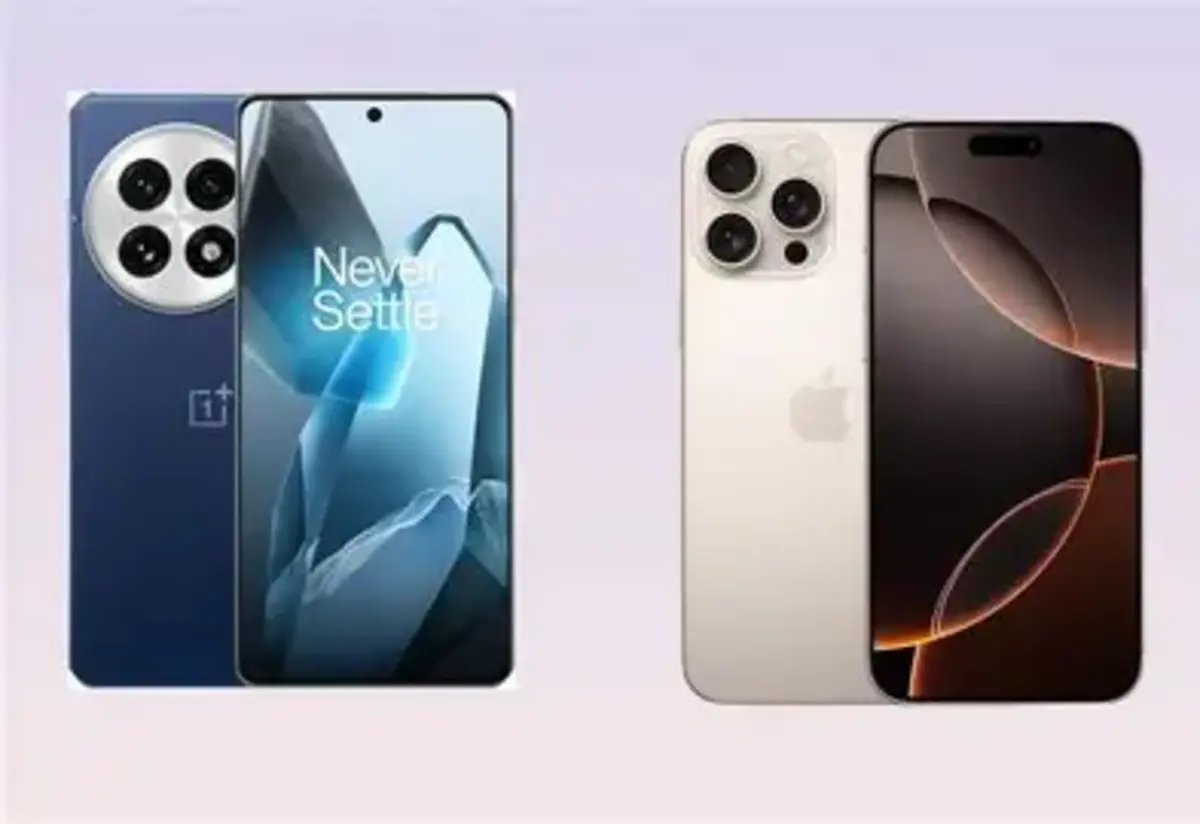Compact phones are few and far between in the current smartphone market, but this is about to change in 2025. As always, Apple has a compact option — the iPhone 16 — but thankfully OnePlus has also produced a compact Android phone, the OnePlus 13s, to fill the long-standing gap.
But now the question – Which one will you buy?
Let’s cut through the jargon and determine what the differences are between these two compact, powerful phones and which one is your best choice.
Design & In-Hand Feel: Almost Identical, But Not Quite
The overall impression from a distance is difficult to separate these two devices. Neither is thicker than the other when measuring the profile, and they share many of the same characteristics:
- Glass back panel (aggressive fingerprint magnet)
- Aluminium frame
- Matte finish (more fingerprint resistant)
Action Buttons: The Same, But Different
Both phones have an Action Button – Apple has its old-fashioned button, OnePlus has its Plus Key. They operate similarly, although OnePlus incorporates an interesting Mind Space mode, which we’ll get into further down.
Security: Face ID vs Fingerprint
This is a very personal preference:
iPhone 16: Face ID – it is secure, but it has to be close to your face.
OnePlus 13s: Has an in-display fingerprint scanner – can be quick enough and convenient to just tap the phone when it’s flat on the desk.
Display Showdown:
60Hz vs 120Hz – Who’s living in 2025? The screen specs are impressive on both phones, especially the protection:
iPhone 16: Ceramic Shield (stronger but more scratch prone)
OnePlus 13s: Corning Gorilla Glass 7i (less tougher but won’tscratch as easily)
Brightness:
iPhone 16: 2000 maxnits-ultra-brightforoutside
OnePlus 13s: 1600 max nits -nice to nice but not impressive like iPhone
Size & Refresh Rate
iPhone 16: Slightly smaller, and 60Hz is the max
OnePlus 13s: Slightly larger, and has a pure 120Hz LTPO panel – dynamically switch from 1Hz to 120Hz on the fly, great for saving battery and looks good.
Final Thought: If you want animations,hire refresh rates, OnePlus 13s has iteasy!
Performance & Gaming: Powerhouses with a Twist
Both phones pack serious punch:
| Feature | iPhone 16 | OnePlus 13s |
|---|---|---|
| Chipset | A18 Bionic | Snapdragon 8s Gen 3 |
| CPU Strength | Superior | Solid |
| GPU Strength | Decent | Excellent |
In terms of actual gaming, the OnePlus 13s can run BGMI at 90FPS, COD Mobile at 120FPS, while the iPhone 16 can only run at 60FPS, simply because it has a 60Hz display. But the iPhone strikes back because it is also able to run console-level games, like Assassin’s Creed and Resident Evil, which Android is still struggling with.
Battery & Charging: Fast or Flashy?
OnePlus 13s: Larger battery, super-fast 80W charging, 7 – 8 hours screen-on time
iPhone 16: Smaller battery, slow 20W charging, but supports wireless charging
Camera Comparison:
Ultra-Wide Camera Missing on OnePlus If havingagreatcamera is essential to you, pay attention.
iPhone 16 offers:
✔ Ultra-wide camera
✔ Better shadow management
✔ More natural, professional-looking photos
✔ Top-tier video performance with stable, high-quality footage
OnePlus 13s offers:
✔ 2X optical zoom lens
✔ Sharper details, especially in zoom shots
✔ AI-enhanced photos — but colors can feel over-saturated
✔ Great macro photography
✔ No ultra-wide lens — a major drawback for travellers, vloggers, or wide landscape shots
For Vloggers: The ultra-wide lens unavailable on the OnePlus 13s makes it more difficult to properly frame shots using the back camera.
Video Quality: iPhone still rules
Both shoot 4K 60FPS from the rear iPhone 16
Cinematic Mode – 4K 30FPS
OnePlus 13s Cinematic Mode – Stuck at 1080p 30fps
The front camera follows the same line, the iPhone 16 shoots 4K 60FPS while the OnePlus only manages 4K 30FPS
Low-light shots?
OnePlus does well, particularly with the 2X lens But the colors pop much more vigorously than the iPhone which have truer color tones.
Software & features: Stability with iOS vs Flexibility with Android.
iPhone 16:
✔ 7 years of iOS updates
✔ Reliable but closed ecosystem
OnePlus 13s:
✔ 4 years OS + 5 years security updates
✔ AI Call Summaries
✔ Call recording without announcements
✔ Floating windows, split-screen
✔ AI Eraser (removes objects from photos better than iPhone)
✔ Reflection removal tools
Final Verdict: Which One’s for You?
| You Should Buy | If You Want… |
|---|---|
| OnePlus 13s | Compact Android phone, 120Hz display, great performance, value-for-money |
| iPhone 16 | Best camera, reliable updates, global brand value, superior video quality |
| Xiaomi 15 | Affordable flagship experience with balanced features |
To Conclude – For the compact phone fans, you now have a choice!
The days of compact going hand in hand with compromise are over. Both iPhone 16 and OnePlus 13s show you can have a small phone with power. As always, the right phone comes down to what you need – gaming, camera, software or brand. Which one would you pick? Let me know in the comments below! And if this post was helpful, share it with your tech-obsessive friends!
Also Read: Top 5 Upcoming Smartphones to Watch Out for in July 2025
FAQ: iPhone 16 vs OnePlus 13s
Q. Does OnePlus 13s have an ultra-wide camera?
No, it only has a 2X optical zoom which is a downside for wide-angle photos.
Q. Which phone is better for gaming?
OnePlus 13s for high-FPS mobile games. iPhone 16 for AAA console games.
Q. Which phone has better battery life?
OnePlus 13s thanks to it larger battery and fast charging.
Q. Does the iPhone 16 display better? It is brighter and more color accurate but is capped at 60Hz whereas OnePlus is at 120Hz.
Q. Are there other compact phone options?
Yes, Xiaomi 15 is another good choice since it is flagship phone features at a really good price.
